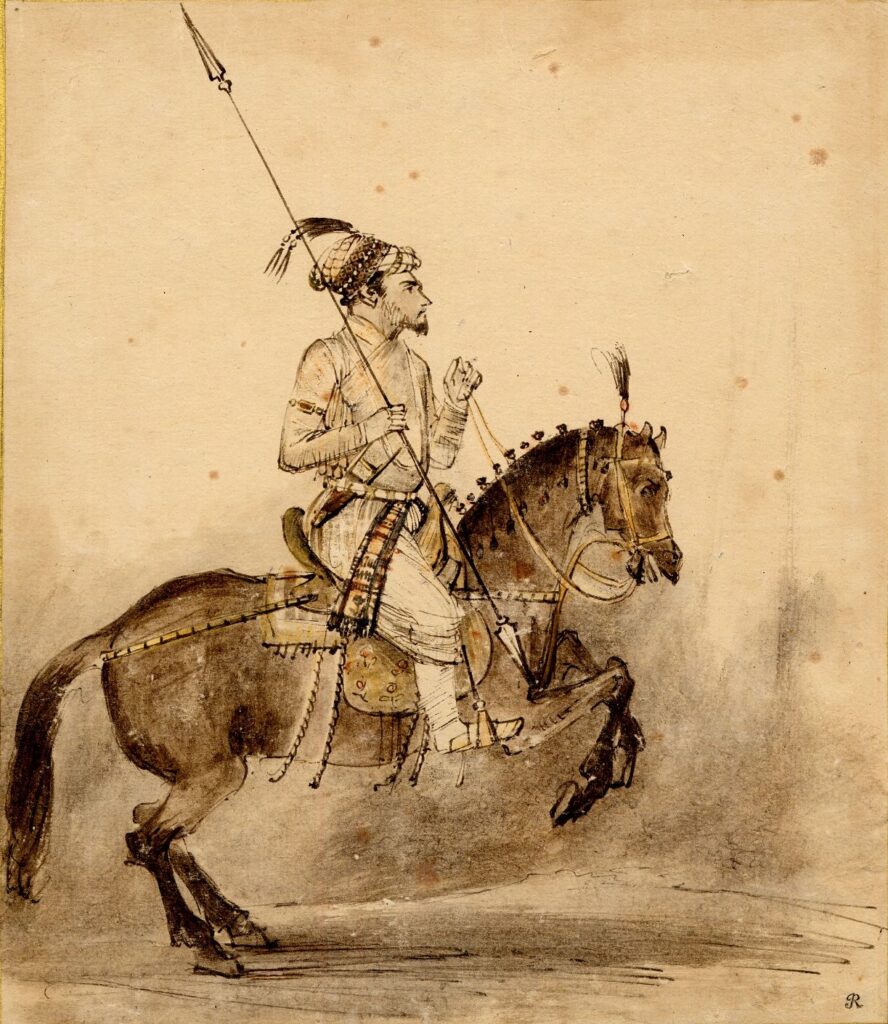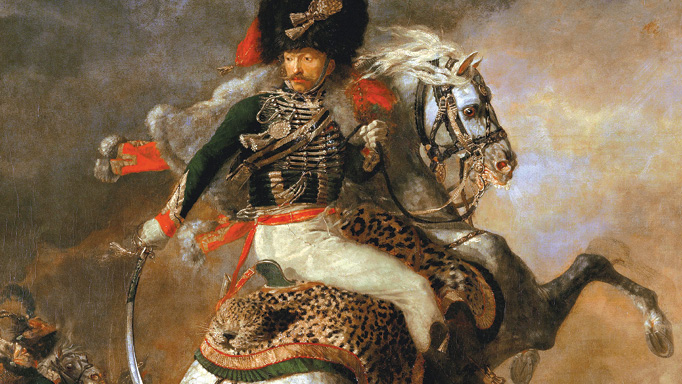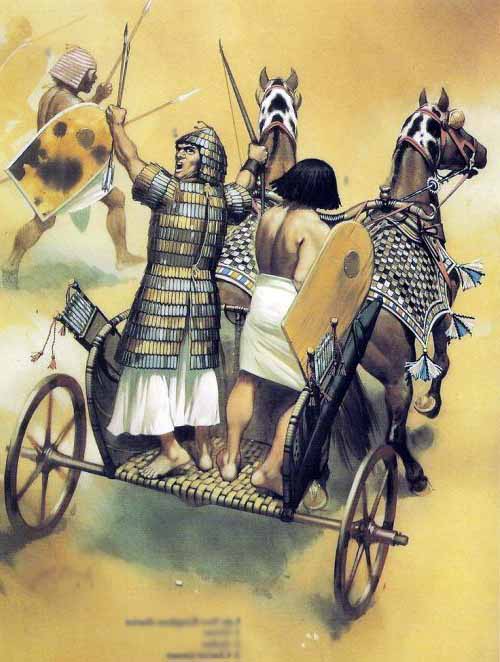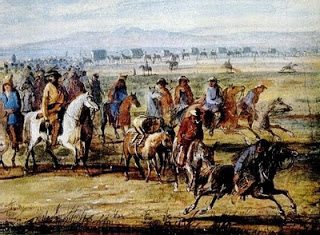Do you ever wonder how horseback riding came to be? It’s such a popular activity, but have you ever thought about its history? Well, get ready to learn more because today we’re going to dive into the fascinating history of horseback riding.
Horseback riding has been a part of human culture for centuries. From ancient times to modern day, people have been riding horses for various purposes. In the early days, horses were used primarily for transportation and warfare. Can you imagine relying on horses to travel long distances before cars or airplanes? It’s amazing how these animals were so crucial to human civilization. As time went on, horseback riding became not just a practical skill, but also a recreational activity. People started riding horses for fun and sport, and it eventually evolved into the equestrian sport we know today. If you’re curious to learn more about the fascinating history of horseback riding, keep reading our upcoming article on horsebackridingdude.com. You won’t want to miss it!

The History of Horseback Riding
Throughout history, horses have played a significant role in shaping civilizations and transforming societies. From their domestication to their utilization in warfare, transportation, and leisure activities, the history of horseback riding is a fascinating journey. In this article, we will explore the ancient origins, development and expansion, medieval and renaissance period, horseback riding in the Americas, modern developments, competitive riding, horse training and communication, therapeutic benefits, horse breeds and characteristics, equipment and gear, famous horses in history, horseback riding in popular culture, ethical considerations, and the enduring appeal of horseback riding as a favorite activity.
Ancient Origins
Domestication of horses
The domestication of horses marks the beginning of horseback riding as we know it today. It is believed that horses were first domesticated around 4000 BC in the Eurasian Steppes. This enabled humans to not only have a reliable source of transportation but also opened up new possibilities for agriculture, trade, and warfare. The early domestication of horses revolutionized human civilization and set the stage for the development of horseback riding.
Early uses of horses for transportation
As humans began to understand the capabilities of horses, they quickly realized their potential as transportation animals. The use of horses for transportation allowed for faster travel, increased mobility, and the ability to transport goods over long distances. This was particularly important for trade and communication between different civilizations. Horses became indispensable companions, carrying humans across vast landscapes and connecting cultures.
Introduction of riding techniques
The development of riding techniques played a crucial role in the advancement of horseback riding. Ancient civilizations, such as the Greeks and Romans, developed various methods of riding that allowed riders to control their horses more effectively. These techniques included the use of reins, saddles, and stirrups. With the introduction of these innovations, riders could maintain balance, control the speed and direction of their horses, and engage in more complex equestrian activities.

Development and Expansion
Emergence of cavalry warfare
With the emergence of organized warfare, horseback riding took on a new dimension – the cavalry. Cavalry units, comprised of highly skilled horse riders, became an integral part of many armies. The ability to maneuver swiftly on horseback and launch attacks with speed and precision gave cavalry units a significant advantage on the battlefield. This development revolutionized warfare tactics and shifted the power dynamics between opposing forces.
Influence of horseback riding in different cultures
The influence of horseback riding transcended geographical boundaries and had a profound impact on various cultures around the world. From the nomadic tribes of the Mongols, who used horses as a symbol of power and conquest, to the Native American tribes of North America, who relied on horses for transportation and hunting, horseback riding became deeply ingrained in the customs, traditions, and way of life of different civilizations.
Spread of horseback riding across continents
As civilizations and empires expanded, horseback riding spread across continents, allowing for cultural exchange and the dissemination of equestrian knowledge. The Silk Road, an ancient network of trade routes connecting the East and the West, played a significant role in the exchange of horses and equestrian techniques. This facilitated the adoption and adaptation of horseback riding practices in different regions, further contributing to its global significance.
Medieval and Renaissance Period
Role of knights and chivalry
During the medieval and renaissance period, horseback riding became synonymous with the ideals of knighthood and chivalry. Knights, armored warriors mounted on powerful steeds, exemplified bravery, honor, and loyalty. Their prowess in horseback riding and combat earned them a distinct place in history and popular imagination. The romanticized image of knights on horseback became an enduring symbol of medieval society.
Equestrian sports and entertainment
The medieval and renaissance period also witnessed the rise of equestrian sports and entertainment. Jousting tournaments, where knights competed in mounted combat, became a popular spectacle enjoyed by both nobility and commoners alike. Equestrian games, such as quintain and tilting at rings, provided entertainment and served as a means for practicing riding skills. These events not only showcased the horsemanship of participants but also celebrated the bond between horse and rider.
Introduction of stirrups and improved riding techniques
The introduction of stirrups during the medieval period revolutionized horseback riding by providing riders with increased stability and control. With the use of stirrups, riders could stand in their saddles and engage in more aggressive riding maneuvers, such as charging with a lance or shooting arrows while on horseback. This innovation significantly enhanced the effectiveness of cavalry units and contributed to the evolution of equestrian techniques.

Horseback Riding in the Americas
Impact of the Spanish conquistadors
The arrival of Spanish conquistadors in the Americas had a profound impact on horseback riding in the region. The conquistadors brought horses with them, which had a transformative effect on the indigenous cultures of the Americas. Native American tribes quickly adapted to the presence of horses and incorporated them into their way of life. The horse became an essential tool for transportation, hunting, and warfare, forever altering the dynamics of indigenous societies.
Native American horsemanship
Native Americans developed unique horsemanship styles and techniques that showcased their deep understanding and harmonious relationship with horses. Tribes, such as the Comanche and Sioux, became renowned for their exceptional horsemanship skills, using horses to hunt buffalo, wage warfare, and engage in ceremonial activities. Native American horsemanship continues to be revered for its connection to nature and its emphasis on mutual respect between horse and rider.
Cowboy culture and the Wild West
The American West became synonymous with horseback riding, cowboy culture, and the famous Wild West. The era of cattle drives, outlaws, and lawmen captivated the imagination of people around the world. Horseback riding became inseparable from the image of the cowboy riding across the open range, herding cattle, and confronting the challenges of the frontier. This period of history solidified the legacy of horseback riding in American culture.
Modern Developments
Invention of the safety stirrup
One of the significant innovations in modern horseback riding was the invention of the safety stirrup. Prior to this development, riders faced the risk of getting their feet caught in the stirrups during falls, posing a great danger. The safety stirrup, designed with a hinged mechanism that allows the rider’s foot to release in case of a fall, revolutionized rider safety and reduced the risk of serious injuries.
Artificial breeding techniques for horses
Advancements in artificial breeding techniques, such as artificial insemination and embryo transfer, have greatly influenced the breeding and improvement of horse breeds. These techniques enable breeders to carefully select desired traits and characteristics, ultimately leading to the production of superior horses for various purposes, including sports, racing, and leisure activities. The ability to control the genetic makeup of horses has significantly contributed to the evolution and diversification of horse breeds.
Growth of recreational horseback riding
In modern times, horseback riding has evolved from being solely a means of transportation or warfare into a popular recreational activity. The pleasure and joy of riding, exploring nature, and forming a bond with horses have attracted people of all ages and backgrounds to engage in horseback riding as a recreational pursuit. Riding schools, riding clubs, and horseback riding vacations have become common, catering to individuals seeking a unique and fulfilling experience.

Competitive Riding
Introduction of horse racing
Horse racing, one of the oldest and most popular forms of competitive riding, has a rich history that spans centuries. Originating from ancient civilizations, horse racing quickly gained popularity as a spectator sport and a platform for showcasing the speed and agility of horses. From prestigious events like the Kentucky Derby to international races like the Melbourne Cup, horse racing continues to captivate audiences worldwide and generate immense excitement.
Show jumping and dressage
In addition to horse racing, show jumping and dressage have emerged as prominent competitive equestrian disciplines. Show jumping tests the horse’s ability to clear obstacles while maintaining speed and agility. Dressage, on the other hand, emphasizes the horse’s precision, obedience, and suppleness in executing a series of movements. These disciplines require skilled riders and well-trained horses, showcasing the beauty and elegance of equestrian performance.
Olympic equestrian events
The inclusion of equestrian events in the Olympic Games further solidifies the significance and global reach of competitive riding. Dressage, show jumping, and eventing, a combination of cross-country, dressage, and show jumping, showcase the highest levels of technical skill, athleticism, and teamwork between horse and rider. The Olympic Games serve as a platform for riders from around the world to compete and exhibit their mastery in these disciplines.
Horse Training and Communication
Methods of horse training
Horse training encompasses a range of techniques and methods aimed at teaching horses to respond to human cues and commands. From traditional methods, such as natural horsemanship and classical dressage, to modern approaches like positive reinforcement training, horse training continues to evolve. These methods emphasize the importance of clear communication, patience, and building trust between horse and rider.
Equine behavior and communication
Understanding equine behavior and communication is integral to effective horse training and riding. Horses communicate through body language, vocalizations, and subtle cues, which humans must learn to interpret and respond to appropriately. By understanding the natural behavior of horses and recognizing their emotional states, riders can establish a deeper connection and develop a harmonious partnership with their equine companions.
Role of horse trainers
Horse trainers play a vital role in the development and education of horses. They possess deep knowledge of equine behavior, training techniques, and riding skills. Trainers work closely with horses to improve their overall performance, develop their physical and mental capabilities, and ensure their well-being. Their expertise and guidance contribute to the success and growth of both riders and horses.

Therapeutic Benefits of Horseback Riding
Equine-assisted therapy programs
Horseback riding has proven to have therapeutic benefits for individuals facing physical, emotional, or cognitive challenges. Equine-assisted therapy programs, also known as hippotherapy or therapeutic riding, utilize the interaction between horses and humans to achieve specific therapeutic goals. These programs help individuals improve their balance, coordination, muscle strength, and emotional well-being, promoting physical and mental rehabilitation.
Benefits for individuals with physical challenges
For individuals with physical challenges, horseback riding offers a unique opportunity for mobility, freedom, and independence. The rhythmic motion of the horse’s gait stimulates the muscles and joints, helping improve coordination and balance. Therapeutic riding also offers a sense of empowerment and accomplishment, fostering a positive outlook and boosting self-esteem for those facing physical limitations.
Psychological benefits of horseback riding
The psychological benefits of horseback riding are also noteworthy. Interacting with horses promotes relaxation, reduces stress, and fosters a sense of connection with nature. The bond formed between rider and horse can be therapeutic, providing emotional support and an outlet for self-expression. Horseback riding can also improve confidence, assertiveness, and overall mental well-being, making it a valuable activity for individuals seeking a holistic approach to their mental health.
Horse Breeds and Characteristics
Different horse breeds and their specialties
Horse breeds vary in size, conformation, temperament, and abilities, making them suitable for specific purposes and activities. From the sleek and elegant Thoroughbred, renowned for its speed and agility in horse racing, to the sturdy and versatile Quarter Horse, favored for its versatility in Western riding and ranch work, each breed brings its unique characteristics and specialties to the world of horseback riding.
Physical characteristics and traits
Physical characteristics and traits play a significant role in determining a horse’s suitability for different riding disciplines. Height, conformation, coat color, gaits, and endurance are among the many factors that influence a horse’s performance and function. Understanding these traits and how they relate to different riding styles enables riders to select horses that align with their specific goals and requirements.
Breeding and genetics
Breeding and genetics play a crucial role in maintaining and improving horse breeds. Selective breeding allows for the propagation of desirable traits, such as speed, strength, and temperament, while minimizing undesirable traits. Breeders consider various factors, including bloodlines, conformation, athleticism, and soundness, to produce horses that excel in their respective disciplines. The field of equine genetics continues to advance, providing breeders with valuable tools for optimizing breeding programs and preserving genetic diversity.
Equipment and Gear
Types of saddles and bridles
Saddles and bridles are essential pieces of equipment used in horseback riding, as they provide comfort to the horse and allow for effective rider communication. Different riding styles and disciplines require specific types of saddles and bridles. English saddles, characterized by their close contact and lightweight design, are commonly used in disciplines such as dressage and show jumping. Western saddles, with their larger seats and prominent horns, are favored in Western riding and ranch work.
Apparel and protective gear for riders
Riders must wear appropriate apparel and protective gear to ensure their safety and comfort while horseback riding. Riding helmets, designed to protect the head in case of falls or accidents, are a critical piece of safety equipment. Riding boots provide support and grip, while riding breeches or jodhpurs offer flexibility and comfort. Additional protective gear, such as body protectors and gloves, may be used for specific riding disciplines or activities.
Essential equipment for horse care
Taking care of horses requires various equipment and supplies. Grooming tools, such as brushes, curry combs, and hoof picks, are essential for maintaining a horse’s coat and overall cleanliness. Feed and water buckets, bridles, halters, and lead ropes are necessary for handling and caring for horses. Additionally, stable equipment, including bedding, muck forks, and wheelbarrows, assists in maintaining a clean and well-organized environment for horses.
Famous Horses in History
Notable horses and their accomplishments
Throughout history, there have been several famous horses that have left an indelible mark. From Alexander the Great’s horse, Bucephalus, known for its loyalty and bravery, to Secretariat, the legendary racehorse that won the Triple Crown in 1973, these horses have become icons in their own right. Their remarkable achievements, unwavering spirit, and remarkable athleticism have solidified their place in the annals of horseback riding history.
Legendary warhorses
Warhorses have played a crucial role in warfare throughout history. Among the most renowned warhorses is the destrier, a powerful and heavily armored horse ridden by knights during the medieval period. Other legendary warhorses include the likes of Marengo, Napoleon’s trusted steed, and Copenhagen, the mount of Arthur Wellesley, the Duke of Wellington. These horses demonstrated exceptional courage and endurance in battle, contributing to their status as icons of equine valor.
Fictional horses in literature and film
Horses have captured the imagination of writers and filmmakers, resulting in the creation of memorable fictional equine characters. From Black Beauty, Anna Sewell’s beloved literary protagonist who endured various hardships, to Shadowfax, J.R.R. Tolkien’s majestic steed ridden by Gandalf the Grey, fictional horses have become beloved symbols of courage, loyalty, and adventure. Their presence in literature and film serves to inspire and captivate audiences, further highlighting the enduring appeal of horses.
Horseback Riding in Popular Culture
Horseback riding in movies and television
Horseback riding has had a significant presence in movies and television, contributing to its portrayal and popularity in popular culture. Iconic films like “Gone With The Wind” and “The Horse Whisperer” feature memorable scenes of horseback riding, while television shows like “Game of Thrones” and “Heartland” incorporate horse riding as a central theme. The visual spectacle, emotional impact, and sense of freedom associated with horseback riding continue to resonate with audiences.
Representation in art and literature
Visual artists and writers have long been inspired by the majesty and beauty of horses. Throughout history, horses have been a recurring subject in various artistic mediums, from ancient cave paintings to classical sculptures and modern paintings. In literature, horses have served as symbols of power, freedom, and natural beauty, their presence evoking a sense of awe and admiration within readers. The artistic representation of horses in various forms of media has contributed to their enduring legacy in popular culture.
Role of horses in folklore and mythology
The importance of horses in folklore and mythology is prevalent across cultures worldwide. In Greek mythology, the winged horse Pegasus represents poetic inspiration, while Sleipnir, the eight-legged horse of Norse mythology, carries the god Odin. Horses often symbolize strength, swiftness, and connection to the divine in folklore, legends, and fairy tales. The presence of horses in these narratives adds a touch of enchantment and mystery to the mythological realm.
Ethical Considerations
The impact of horseback riding on horses
While horseback riding brings joy and fulfillment to riders, it is essential to consider the impact on the horses themselves. Ethical riding practices prioritize the well-being and welfare of horses, ensuring they are treated with kindness, respect, and care. This includes proper training methods, appropriate equipment, suitable rest and recovery periods, and an understanding of a horse’s physical and emotional limits. Responsible riders strive to maintain a harmonious partnership with their horses, recognizing their needs and ensuring their overall welfare.
Animal welfare and responsible riding practices
Animal welfare organizations and equestrian communities have placed a strong emphasis on promoting responsible riding practices and safeguarding the welfare of horses. This includes providing horses with adequate nutrition, veterinary care, and living conditions that allow for natural behavior and social interaction. Respecting horses as sentient beings and ensuring their well-being is a fundamental aspect of responsible horseback riding.
Controversies surrounding horse racing
Horse racing, while popular and deeply ingrained in many cultures, has faced significant controversies and ethical debates. Concerns regarding horse welfare, the use of performance-enhancing drugs, and the impact of the gambling industry on the sport have prompted discussions about the future of horse racing. Animal welfare advocates continue to advocate for stricter regulations and enhanced safety measures to ensure the well-being of racehorses.
Conclusion
The history of horseback riding is a testament to the enduring appeal and significance of the horse-human bond. From its ancient origins to its evolution in different cultures and its presence in modern society, horseback riding continues to captivate individuals and shape our world. Whether it be for transportation, warfare, competition, therapy, or pure enjoyment, horseback riding holds a special place in our hearts and serves as a conduit for exploration, growth, and connection. As we move forward, it is crucial to uphold the principles of responsible riding and ensure the welfare and well-being of our equine partners. So, saddle up, grab the reins, and embark on your own equestrian adventure – the legacy of horseback riding awaits.